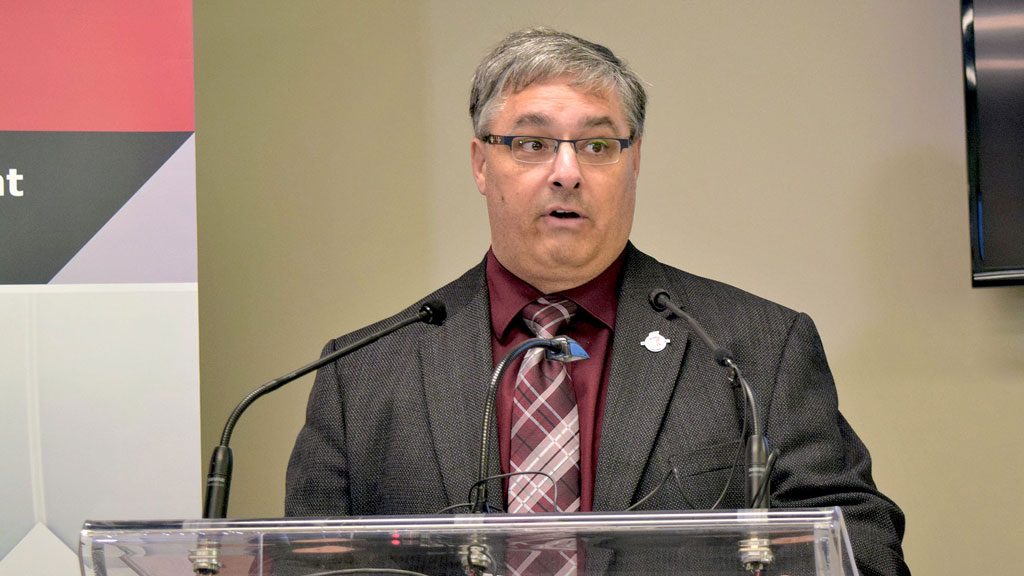The Ontario Electrical League (OEL) has fired the first volley as the Ontario College of Trades (OCOT) enters its next round of reviewing apprenticeship ratios for construction trades.
The OEL held a media conference in Toronto Aug. 22 at which time its leadership said the current ratio structure prevents new electricians from finding positions in the field, and called for a new journeyman/apprenticeship ratio for electricians in construction and maintenance of 1:1 regardless of the size of the firm.
The current ratio structure is variable with 1:1 the requirement for the first through fourth apprentices, then three additional journeypersons required for a fifth apprentice, six more for the next and three more for a seventh.
The OEL supported its call by revealing the results of a survey conducted of its members in which 73 per cent said they would hire more apprentices with a 1:1 ratio. Of 127 respondents, the total number of new apprentices they said they would hire was 307.
ŌĆ£Entering the electrical trades in Ontario is increasingly difficult because of the apprentice to journeyperson ratio cap, which puts the education and development of the next generation of electricians at risk,ŌĆØ said Stephen Sell, OEL president, in a statement.
He said at the media conference, ŌĆ£The answer is logical, modernizing the ratios today.ŌĆØ
Sell said the complexity of the ratio structure was a big issue with contractors.
ŌĆ£You ask a contractor, they donŌĆÖt know how many they can have,ŌĆØ he said.

Sheridan College electrical studies graduate Alexander Klusek of Oakville, Ont. spoke to drive home the point about limited apprenticeship opportunities.
For over a year he has been unable to find a position despite sending out over 100 resumes. He feels defeated and let down, he said, and he is considering changing professions.
Apprenticeship ratios for construction trades are reviewed by the College of Trades every four years with the last review completed in 2014. The latest review period was extended into 2019 because of the recent provincial election.
Similar to the last review, consultations seem likely to pit opponents of restrictive apprentice ratios, such as the OEL, against proponents of the current structure such as the International Brotherhood of Electrical Workers (IBEW).
Responding to the OEL call for a new ratio structure, James Barry, executive chairman of the IBEW Construction Council of Ontario and a former member of the OCOT board of governors, said the current ratio structure tends to ensure the safety of electrical workers and promotes better quality construction, and suggested OEL contractors were looking to save on wages.
ŌĆ£When considering ratios, one must also give sufficient thought to how this would affect completion rates, the integrity of apprenticeship training and occupational safety,ŌĆØ commented Barry in a statement to the Daily Commercial News.
ŌĆ£The complexity of electrical work requires adequate supervision and training to not only keep apprentices and workers safe but itŌĆÖs essential to ensuring we are building schools, hospitals and other key infrastructure projects correctly with no risk to the public.ŌĆØ
On the costs issue, he wrote, ŌĆ£A scheme that would allow contractors to cut their costs by hiring ŌĆśhelpersŌĆÖ under the guise of apprenticeship ŌĆö knowing full well they will never advance to journeyperson status ŌĆö is not a solution to any potential skilled trades shortage.ŌĆØ
Sell addressed the wages and safety issues during a question and answer session and in a follow-up interview.
ŌĆ£Health and safety is more complex than just the ratio,ŌĆØ he said. ŌĆ£Take any jobsite for example. You have higher risks on some jobsites than on others. So because the ratio is not applicable to a jobsite per se, it applies to the company, where is the health and safety from site to site? The ratio doesnŌĆÖt impact that. ThatŌĆÖs where it is on the company to ensure people on that site are properly trained and are observing the rules, and that they are training properly.ŌĆØ
On wages, Sell said the costs saved by having more lower-paid apprentices on staff is countered by the productivity losses associated with a journeyperson having to perform a mentoring function, and the apprentices themselves are not as productive as a journeyperson.
ŌĆ£If you look at it from an overall economic standpoint, it is probably a wash,ŌĆØ he said.
Another speaker at the press conference was Don Gosen, chair of the OCOT board of governors, who worked as an electrical contractor for 38 years. He said the review period as currently planned could take up to nine months but he was committed to fast-tracking the process.
ŌĆ£I am excited that this group is bringing this issue forward,ŌĆØ he said.
ŌĆ£I am not advocating for the 1:1 ratio,ŌĆØ he clarified in an interview. ŌĆ£I think the ratios need to be eased but I personally am not in favour of 1:1 because I am concerned about the quality of training.
ŌĆ£There has to be some checks and balances in place to ensure that the mentorship is maintained, and that the quality of training and quality of experience the apprentice has is maintained.ŌĆØ
George Gritziotis, CEO and registrar of the College, issued a statement stating he appreciates the work OEL has done on this issue and for inviting the College to participate in the news conference.
ŌĆ£We look forward to supporting work related to the ratio reviews alongside all of our stakeholders and the new government to ensure the best possible ratio setting process based on economic need, safety and quality of training for apprentices in all trades,ŌĆØ the statement reads.
ŌĆ£OntarioŌĆÖs journeyperson to apprentice ratio limits are of course only one part of the apprenticeship system, and the College looks forward to continuing and expanding the supports and opportunities available to sponsors and apprentices to help develop OntarioŌĆÖs future skilled workforce.ŌĆØ











I agree 100% with 1:1 ratio. Our trade has our hands tied and all these young workers cant get into the trade. We get almost a call every 2 weeks from young workers that want to get in asking for work but due to ratio its always the same answer.